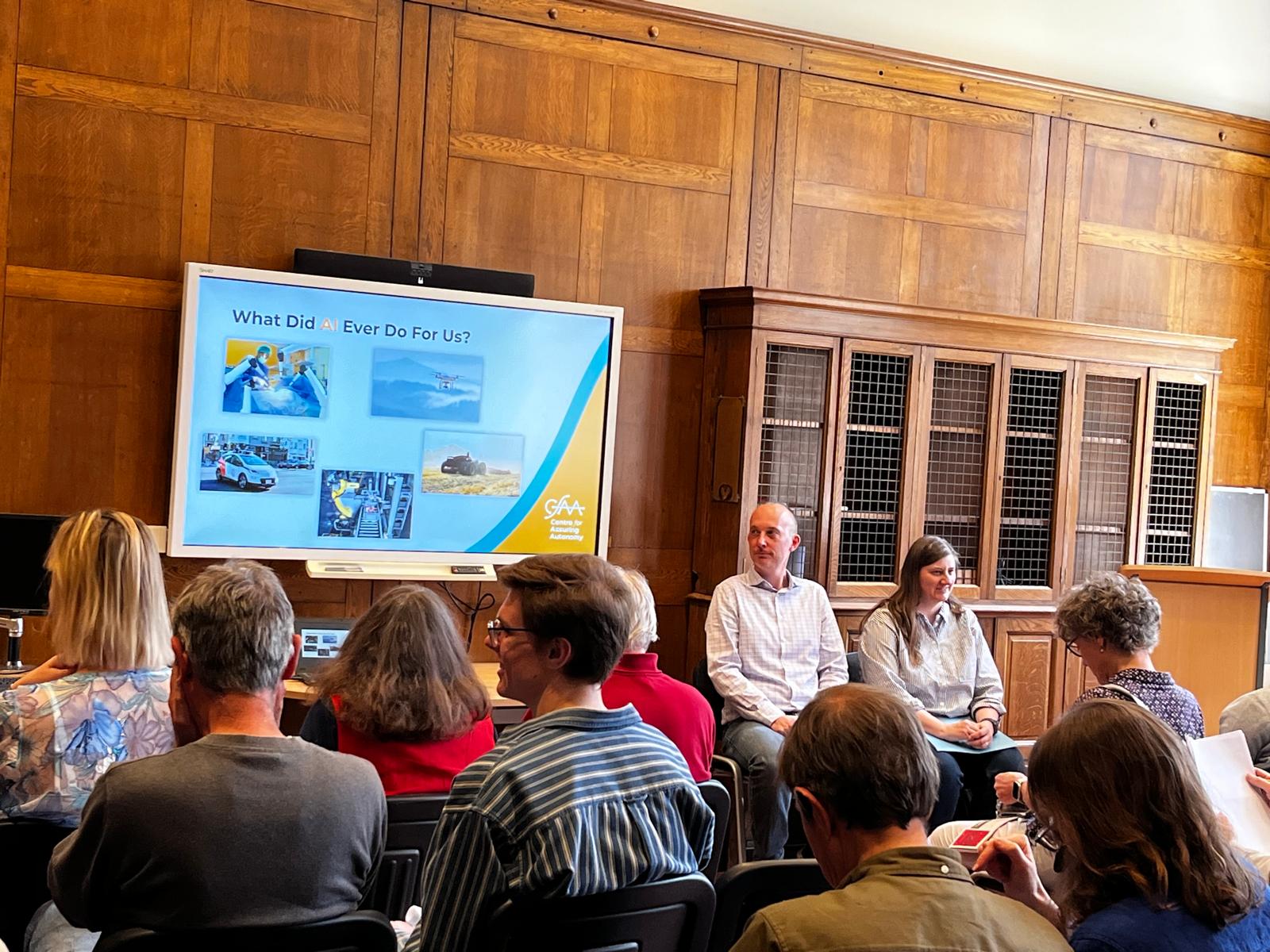What’s hype and what’s real - the future of AI safety
At the recent Festival of Ideas held in York our academics and researchers talked to over 120 members of the public about the current advances in AI and explored the hype and reality of AI technologies. The Festival of Ideas is a fantastic way for us to engage directly with the public and share the important research our experts do into safety assurance of AI and machine learning-enabled systems.

Can we trust AI?
A packed audience joined Senior Lecturer Dr Richard Hawkins and Research Fellow Dr Philippa Ryan at York Explore at the York Explore Library for their presentation ‘Can we trust AI to keep us safe?’ where they discussed what current AI technologies can do and also what the limitations of such systems are. Dr Ryan and Dr Hawkins then took the audience through examples of where and why AI-enabled autonomous systems, like cars, might go wrong and why safety assurance has a big role to play in the safe rollout of such systems across society.
Dr Hawkins said: “Everyone is hearing a lot about AI at the moment, and it can be quite confusing. It is also difficult sometimes to know what is just hype and what its real capabilities are. Members of the public also perhaps don't understand how AI will affect them and may be concerned about whether this new AI is safe.
“Our audience seemed particularly interested in our discussion about whether AI in a self-driving car would do a good job when driving on the streets of York. I think this was particularly engaging because it is something that they think could happen at some point in the not too distant future, and they are concerned about how it could impact them as York residents.
“We were able to show examples of why somewhere like York is a real challenge for AI technology and describe how our research may be able to help address some of these challenges.”
Seeing safe AI in action
The following weekend visitors had a chance to see this in action at the Centre’s base in the Institute for Safe Autonomy, where Dr Eng. Paulina Lewinska and Dr Calum Imrie ran an aerial drone demonstration in our large lab, Test Space 1. The basis of this demonstration was the ASPEN project run by Professor Radu Calinescu and Dr Imrie. Our team showed the public how an unmanned aerial vehicle (UAV) with camera and embedded object detection algorithm works with our wheeled robot, nicknamed Husky, to autonomously detect a diseased plant or tree and retrieve a sample. In a real-life scenario, trekking through forests and dense woodlands presents multiple dangers for humans, such as needing to climb to retrieve a sample. By doing this autonomously, we can reduce the risk to humans.
Dr Eng. Lewinska said: “This demonstration presented a good opportunity to show the public both the capabilities of various autonomous systems and their limitations. In the scenario we presented at the Festival of Ideas the drone could fly autonomously and identify the sick plant, then the operator can send the Husky, also autonomously, to retrieve the sample. Once the Husky is at the location a human operator can take over manual control of the Husky to cut and retrieve the sample. The Husky can then resume autonomous operation and return the sample to the waiting operator.”
Watch a video of the demonstration from the day of the drone and Husky in action below (video by Dr Eng. Lewinska and Dr Imrie ).
What's happening in the video?
0:00 - 0:24 - autonomous flight of the UAV (avoiding obstacles)
0:24 - 0:33 - a view from the UAV perspective(on the left - a view from the UAV camera, with object detection, once is detect an Orange (sick fruit) it places a red dot on the map on the right)
0:33 - 0:46 - UAV autonomous comes back to the safe landing area (you can see a person with controller but that person is not using it to control the UAV)
0:46 - 1:11 - The map with red dot (placement of the sick plant) is being automatically downloaded to the Husky (wheeled robot) and using obstacle avoidance tries to get itself near to the sick plant
1:11 - 1:33 the operator takes over the control and places the Husky closer and performs the cutting operation.
1:33-2.00 The husky autonomously comes back to the safe area avoiding obstacle, including the people on its way.